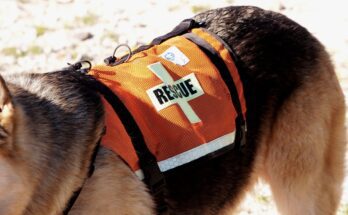Are your kids constantly fighting? At some point, do they step on each other’s toes? Are they constantly mad at each other, but have no idea why?
Your kids might not have the same DNA.
People assume siblings have the same DNA, but that’s not always the case. Sometimes, a parent had a previous relationship or a past partner that can influence a child.
Teaching your kids about DNA isn’t easy, and you have no idea where to start. This guide gives you the answer to a question. Keep reading to learn how to explain sibling DNA to your children.
What is DNA?
DNA is like a special recipe book inside your body. It stands for deoxyribonucleic acid.
It’s made up of tiny instructions called genes. Just like a recipe book tells you how to make your favorite cookies, DNA tells your body how to grow and work.
How Do We Get DNA?
When we are born, we inherit our DNA from our parents. We receive half of our DNA from our mother and the other half from our father.
It’s like receiving a combination of traits and characteristics from both sides of our family. This is why you may resemble your parents or share certain physical features with them.
Siblings and Their Unique DNA
Although siblings share the same parents, they don’t have identical DNA. When two siblings are born, each one receives a unique combination of genes from their parents.
This is like how two recipes can get created with the same ingredients but with different cooking methods. The individual mix of genes that siblings inherit creates their distinct DNA profiles. To learn more about this, check out sibling DNA testing procedures online, for example.
Similarities and Differences
While siblings have different DNA, they may still share similarities. Since they come from the same parents, siblings often have common physical traits. This could be their eye color or hair type.
They might also share certain talents or interests. This is mostly because of family genetics.
But, siblings also have their own unique set of genes. This can lead to differences in appearance, personality, and abilities.
These differences make each sibling a one-of-a-kind individual. It will be like pieces of a puzzle that fit together in their unique way.
Why Siblings Are Similar
Even though siblings have different DNA, they may still have similarities. This is because they share the same parents. Parents pass down certain traits and characteristics to their children through their genes.
This is why siblings might have similar eye color, hair texture, or facial features. But, each sibling has a unique combination of genes. This contributes to their individuality and differences.
Are Sibling DNA Similar?
Siblings will all have different points of DNA overlap. But the key takeaway is that they share much of the same genetic code or sibling DNA. That said, siblings can still be very different from one another and come from unique backgrounds.
At the end of the day, what’s important is understanding the value and importance of familial bonds– regardless of genetic markers. Treat your siblings with respect and love for just who they are!
Check out our other blog posts for more health and lifestyle topics.



